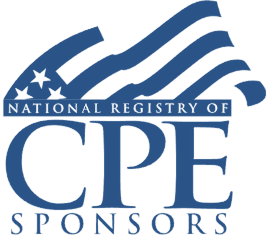- videocam On-Demand
- signal_cellular_alt Intermediate
- card_travel Tax Preparer
- schedule 110 minutes
Donor Advised Funds, Private Foundations, Gift Annuities, and Other Charitable Contribution Arrangements
Bunching to Maximize Tax Benefits, Gifting Strategies for High Net Worth Individuals
Welcome! Save 30% on all CLE, CPE, and Professional Skills webinars, plus 15% off any annual pass with code CYBER2025
About the Course
Introduction
This course will contrast and compare charitable gifting arrangements that enable high net worth individuals to donate substantial assets to charity and receive a tax deduction. It will address strategies, including donor advised funds (DAFs), private foundations, charitable gifting annuities, CLTS and CRTS, and other strategies for gifting significant assets.
Description
Planned giving is an integral part of tax planning for high net worth individuals. It is vital that tax advisers understand the differences in these techniques to recommend an appropriate arrangement for their clients. The Tax Act of 2017 significantly raised the standard deduction, $15,000 for single taxpayers and $30,000 for married couples filing jointly in 2025. This encourages "bunching" strategies, making significant charitable contributions one year, and taking the standard deduction the others. Tax reform also raised the limit on cash charitable contributions to public charities and some private foundations to 60 percent of AGI from the prior 50 percent. Both of these changes encourage large taxpayer gifts.
The surge in the use of DAFs was fueled by tax reform. These nifty vehicles allow privacy, an immediate tax deduction, and create planning opportunities. DAFs facilitate the "bunching" strategy. Taxpayers can front-load contributions just before retirement or make a large deductible contribution in a year with extraordinary income. The donor "advises" the foundation or charity on disbursements to be made, allowing the charitable organization to receive steady annual funding if desired.
Private foundations, like DAFs, provide an opportunity for an immediate tax deduction while deferring charitable giving. These foundations are organized as a trust or corporation, must apply to the IRS for tax-exempt status and meet annual minimum distribution requirements. Donors wanting to establish a family legacy and maintain control over contributions may prefer a private foundation.
DAFs and private foundations don't need to operate exclusively. A private foundation wanting to remain anonymous or struggling to meet its minimum distribution requirement could establish a DAF.
A conservation easement is another well-known gifting vehicle that provides a sizeable charitable deduction for a worthy cause. However, in light of recent challenges and disallowances, are these a wise choice?
Each gifting strategy comes with its own mandated compliance obligations. Without meeting these requirements, the benefits of planned giving could be forfeited. Contributions have been regularly disallowed for complex arrangements like conservation easements as well as simple transactions like unacknowledged cash contributions.
Listen as our panel of experts explains the most effective donation strategies so that you can select an effective and rewarding plan for you or your clients.
Presented By

Ms. Fisher has worked in wealth management since 2002. She provides investment and consulting advice for endowments and foundations, and helps individual clients incorporate innovative philanthropy strategies into their financial and estate plans. In addition to providing personal financial planning and investment management services, Ms. Fisher also provides insurance analysis, estate planning, education planning, and innovative strategies for clients to incorporate philanthropy into their financial and estate plans. She is a CERTIFIED FINANCIAL PLANNER™ practitioner and holds Series 7, 63, and 65 licenses.

Mr. Petermann is a Partner of the Firm and serves as Co-Partner-in-Charge for the Private Foundation Practice. He has over 30 years of specialized experience in accounting for exempt organizations and private foundations, as well as closely-held businesses and financial services entities. He also holds a number of professional committee and community board positions.
-
BARBRI is a NASBA CPE sponsor and this 110-minute webinar is accredited for 2.0 CPE credits.
-
BARBRI is an IRS-approved continuing education provider offering certified courses for Enrolled Agents (EA) and Tax Return Preparers (RTRP).
Date + Time
- event
Wednesday, May 14, 2025
- schedule
1:00 p.m. ET./10:00 a.m. PT
- Identifying clients needing charitable planning
- DAFs
- Private foundations
- CLTs and CRTs
- Other arrangements
- Charitable deduction compliance
The panel will review these and other key issues:
- Identifying clients who need charitable planning or assistance with charitable planning
- The pros and cons of the most common charitable gifting strategies
- Selecting the appropriate charitable gifting arrangement for the taxpayer
- Securing the charitable deduction for charitable gifts
- Establishing a DAF
Learning Objectives
After completing this course, you will be able to:
- Identify common charitable gifting methods
- Recognize taxpayers who would benefit from a gifting plan
- Determine which charitable plan is best suited to the taxpayer
- Discern differences between common gift-giving strategies
- Field of Study: Taxes
- Level of Knowledge: Intermediate
- Advance Preparation: None
- Teaching Method: Seminar/Lecture
- Delivery Method: Group-Internet (via computer)
- Attendance Monitoring Method: Attendance is monitored electronically via a participant's PIN and through a series of attendance verification prompts displayed throughout the program
- Prerequisite: Three years+ business or public firm experience preparing complex tax forms and schedules, supervising other preparers or accountants. Specific knowledge and understanding of pass-through taxation, including taxation of partnerships, S corporations and sole proprietorships, qualified business income, net operating losses and loss limitations; familiarity with net operating loss carry-backs, carry-forwards and carried interests.

BARBRI, Inc. is registered with the National Association of State Boards of Accountancy (NASBA) as a sponsor of continuing professional education on the National Registry of CPE Sponsors. State boards of Accountancy have final authority on the acceptance of individual courses for CPE Credits. Complaints regarding registered sponsons may be submitted to NASBA through its website: www.nasbaregistry.org.

BARBRI is an IRS-approved continuing education provider offering certified courses for Enrolled Agents (EA) and Tax Return Preparers (RTRP).

BARBRI CE webinars-powered by Barbri-are backed by our 100% unconditional money-back guarantee: If you are not satisfied with any of our products, simply let us know and get a full refund. Contact us at 1-800-926-7926 .
Unlimited access to premium CLE courses:
- Annual access
- Available live and on-demand
- Best for attorneys and legal professionals
Unlimited access to premium CPE courses.:
- Annual access
- Available live and on-demand
- Best for CPAs and tax professionals
Unlimited access to premium CLE, CPE, Professional Skills and Practice-Ready courses.:
- Annual access
- Available live and on-demand
- Best for legal, accounting, and tax professionals
Unlimited access to Professional Skills and Practice-Ready courses:
- Annual access
- Available on-demand
- Best for new attorneys
Related Courses

Deducting Trust and Estate Charitable Donations: Trust Provisions and Wills, Recent Court Cases, Reporting Issues
Thursday, January 22, 2026
1:00 p.m. ET./10:00 a.m. PT

Tax Research Techniques: Internet Tools, AI Caveats, Methodology, Documentation and Communication of Results
Wednesday, January 21, 2026
1:00 p.m. ET./10:00 a.m. PT

Recent IRS S Corporation Initiative: Losses in Excess of Basis, Taxable Distributions, Handling the Examination
Friday, January 16, 2026
1:00 p.m. ET./10:00 a.m. PT

Family Office Tax Update: Foundational Principles and Emerging Issues
Available On-Demand
Recommended Resources

How CPE Can Bridge the Gap Between What You Know and What You Need to Know
- Career Advancement


